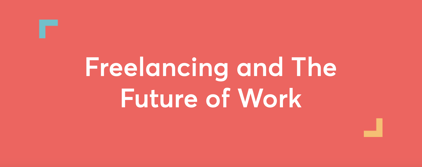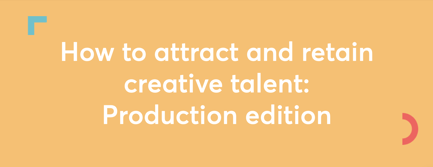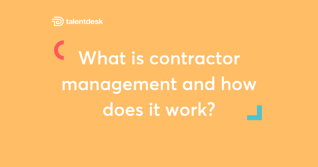- 31 Jul 2019
- 5 mins read
- Posted in
You know you need a Freelancer Management System (FMS) to plug the gap when it comes to managing your fluid team – but now you need to get buy-in from the rest of the business, whether that’s finance, HR, IT or even the board. Obviously, this depends on the size of the business as to the stakeholders that need to be involved. This might be different for you. But whoever your stakeholders are, you’ll need to make sure you engage them fully every step of the way. Here, we provide you with seven tips to help get everyone on your side:
1) Build a business case for an FMS
You need to provide your stakeholders with the data and hard facts they need to be able to commit to implementing an FMS. This is a chance to map out your argument, providing a clear strategy and financials for how the system will benefit the business.
The first part will be to outline the goals and scope the project. This is a good place to provide background information:
- How has the current situation given rise to the need for an FMS?
- What challenges are being faced?
- What is the cost to the company?
- How is it impacting the internal team?
- How will things change if an FMS is implemented?
This needs to align with your business’ strategy. If your organisation is currently using agencies, find out the cost of that, not just in monetary terms but the time taken to hire someone. Highlighting these pain points early on is key, so that stakeholders can relate this project to something that they’re probably already familiar with. You can read our article on the benefits of freelancer platforms over outsourcing agencies to help strengthen your cause.
2) Engage stakeholders early on
It’s essential that you include your stakeholders in the process from the very beginning. This is a point where many projects fail, if care isn’t taken. Whether it’s your finance director, head of HR – or whoever else your stakeholders might be – they need to feel invested in the project and see the imperative to implement an FMS. It’s easier to achieve this if they don’t feel like they’ve been excluded from the process.
Also, if you’re in a large team, be sure to include those individuals who will use the system on a day-to-day basis. Their input is valuable in terms of the current pains that they’re experiencing working with freelancers and managing day-to-day projects. If they can see the benefits of how an FMS will make their lives easier, they’re more likely to become ambassadors for the project.
3) Identify stakeholder motivation
Different stakeholders are motivated by different things, so you need to find out what’s important to each of them. What questions are they likely to ask? What will they want to know? Much of this may need to go into the business case and you also need to explain it on their terms – and without any jargon.
Research carried out by Oxford Internet Institute, ‘Platform Sourcing: How Fortune 500 Firms Are Adopting Online Freelancing Platforms’ highlighted the importance of including the finance and HR function given they often have a great sway over software adoption with some of the cases covered by the research pointing to how ‘...human resources expressed concerns about employment issues and proper freelancer classification. Legal was concerned with information security when freelancers could access internal systems or sensitive data’.
One of the key obstacles to overcome may be the fact that your HR director and their team are not responsible for engaging freelancers – and certainly not for assigning projects. This means you will need to put aside time to help them understand how freelancers work differently and why it’s not the same as hiring employees.
You may be able to get buy-in from your operations director to assist you in this process particularly where they understand the operational impacts of running projects and each of the key parts in that process. In effect, whilst you’re managing talent in many respects, they’re suppliers which is very different from having an employee. It is much more about the ongoing process after you hire a freelancer which in reality extends beyond the remit of the HR department.
But by having open conversations it allows potential objections to be raised early on. This way you can effectively deal with concerns and increase the likelihood of getting stakeholders on your side. Along with the benefits of the system, remember to address what’s in it for them – and link this to your business case.
4) Define the quantifiable benefits
When outlining the benefits make sure that they’re quantifiable wherever possible. You need to be able to measure them. This allows for a post-implementation review to evidence that the improvements promised have come to fruition.
If HR, finance and IT see the benefits of the FMS, there’s a possibility that they can also use it to expand their own teams as they experience the success it has brought to other departments. Whilst many users of an FMS are within software development, marketing and the creative fields, there’s added value for finance and HR to be able to utilise freelancers in the right circumstances.
In addition to the positive benefits, it’s important to think about it from the other side as well – what would be the cost of not implementing an FMS? How is that going to impact the business in terms of time and money? It could mean falling behind the competition who are increasing their freelancer workforce in order to stay lean and agile.
5) Identify potential problems or risks
This shouldn’t be underestimated or brushed aside. When you’ve taken the time to foresee the risks that might be inherent in the project you can prepare for them. This could include: issues with project management, ensuring that it is implemented correctly, and once it is implemented making sure that the team actually moves from using spreadsheets and manual processes to the new system.
By reviewing these upfront, plans can be made to address the risks, if they happen. This means you’ll be more prepared along the way. And whilst it’s impossible to plan for every eventuality, it shows stakeholders that you’ve taken a full 360 degree view of the project. This will give them more confidence that the project is right for the business.
6) Listen to feedback
This is crucial. Your stakeholders may raise objections which could be for a multitude of reasons. Maybe they hadn’t felt fully engaged or you misread their motivations to get behind a project like this. It could be that you didn’t explain something well or there may be something that they genuinely don’t quite understand.
This is a moment to listen and reflect on what is being said. Objections whilst frustrating can be very valuable – it might highlight where there are gaps in your business case that need fixing. You need to review these because if you understand what the problems are, you can look to solve them and make your business case stronger.
7) Build trust
As with any system purchase, you need to build trust with stakeholders. This calls for transparent, honest relationships with regular communication and updates to keep everyone informed.
It’s important to be consistent. Offer objective solutions and always look at it from the bigger business picture. When stakeholders trust the project instigator (and their team) they are more likely to provide the support you need. After all, trust is an essential part of bringing the business along with you on the journey to agreeing to implement an FMS.
As Mercer points out in ‘Global Talent Trends 2019’ managers need to answer the question, “What will be expected of managers going forward, and what is their role in enabling employee growth and development?” The answer to this question will hopefully bring home the urgency of planning now for the impending need to grow your freelancer talent base – including the means by which to manage that talent. With an FMS in place, it will help organisations to solve tomorrow’s business problems today, putting them in a better position to drive their business forward with the peace of mind of having the best systems in place.

Floris ten Nijenhuis
Speak to us to find out how we can help you pay your contractors more efficiently
Related articles

Top 10 Best Video Animation Agencies
It's not always the giant animation agencies creating the best work. Take a look at TalentDesk's top ten picks of our favourite animation agencies.
How to Manage Subject Matter Experts
How to Manage Subject Matter Experts
Unlock the full potential of your projects with our expert guide on managing Subject Matter Experts. Learn strategies for effective collaboration.

Work, Reconstructed
Xenios Thrasyvoulou and Glen Hodgson discusses the main compliance issues that are faced today within the talent and HR sectors.

Freelancing and The Future of Work
Xenios Thrasyvoulou discusses shaking up the employment game, refreshing the tax rulebook, and removing the final hurdles to a super-flexible workforce.
Freelancer vs. Design Agency: Why We Chose to Stay Agile
Freelancer vs. Design Agency: Why We Chose to Stay Agile
When we decided to revamp our website, we took time to consider the pros & cons of freelancers vs design agencies. Here's why we chose a freelancer.

What is a 1099 employee?
Failure to classify your workers correctly can impact finances, employee morale and your business’ reputation. Learn all you need about 1099 employees here

Why Hire a Freelance Social Media Manager
Managing social media accounts can be a significant drain on time. Read the benefits of hiring a social media manager and how this may be the solution.
Scalable Workforce Solutions for Digital Marketing Agencies
Scalable Workforce Solutions for Digital Marketing Agencies
For marketing agencies, levels of work can vary significantly. How do you scale your team to meet client needs while avoiding overcapacity at other times?

How to attract and retain creative talent globally
How to attract and retain creative talent globally

How to Determine a Contractor vs Employee
Use our comparison chart and checklist to test whether your workers are Contractor vs Employee. Classifying workers correctly is a legal requirement.
